Ahoy, squirts! Quint here with the next installment of A Movie A Day.
[Every day Monday-Friday I’ll be reviewing a film I haven’t seen before as a way to fill some gaping holes in my film knowledge while at the same time building up a conversation about movie history. Each film will be connected in some way to the film before it, be it by actor, director, writer, etc. It’s a great time to be a film explorer, with TCM’s amazing programming, Netflix Watch Instant’s large library and studios starting up boutique burn-on-demand DVD services for their more obscure vault titles. So, I’m going exploring and I hope you guys will join me on my cinematic expedition.]
Today we’re looking at Powell & Pressburger’s A Matter of Life and Death, but before we dive into that masterpiece (and it is one), it’s time for another Buster Keaton short!
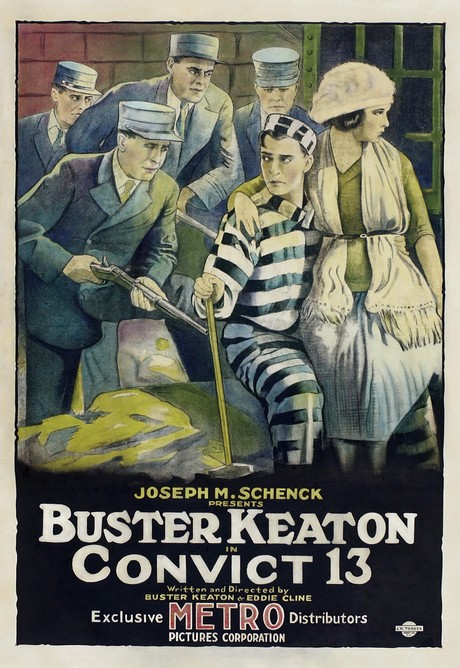
One thing that’s becoming more and more apparent the more Keaton shorts I watch is just how influential these things were to Looney Tunes. The tone of these Keaton shorts are goofy and they’re set in a heightened reality where a man can swing a ball and chain like it was a volleyball on a string or bend steel bars with his bare hands. Keaton doesn’t try to set up this reality, just goes with it and somehow makes it easy for the audience to join him.
This short has Buster as a golfer who knocks himself out with his own ball, much to the delight of a recently escaped prisoner who swaps his black and white stripes for Buster’s golf attire and makes a hasty escape. Keaton ends up in prison and if that weren’t bad enough a prison riot is about to break out and he’s due to be hanged.
While all this is going on, the warden’s daughter (Sybil Seely, from yesterday’s short, One Week), takes a liking to him and tries to help him out.
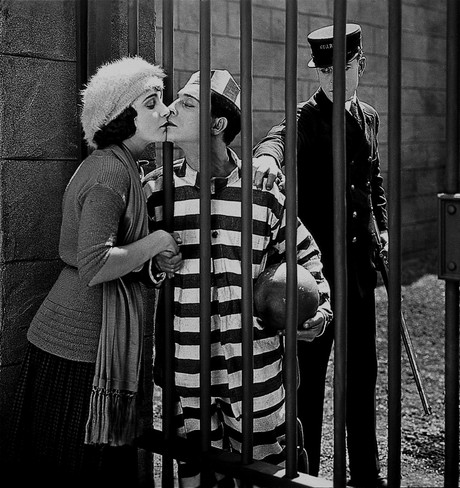
While Convict 13 might not be as through and through brilliant as One Week, it’s still a delight. Never one to keep things simple, Keaton’s character bounces between convict and guard uniforms at the exact wrong moment. He figures he’s got it made when he accidentally knocks out a guard, but then the prison riot breaks out and now it’s him versus all the convicts, led by a hulking brute of a guy. If this were a Popeye cartoon, this guy would be Bluto.
The way Keaton ends up getting all the prisoners under control is an amazing display of coordination as he swings a ball on a rope and smacking heads in a 360 degree circle around him. I have to imagine there were many stunt men with black eyes after that day’s shooting.
Something to look out for: Keaton’s collaborator (co-writer and director on most of these shorts) Edward F. Cline makes an appearance here as the hangman. Speaking of, you gotta see how Keaton gets out of that particular moment.
Another winner! Now let us move on to the feature…
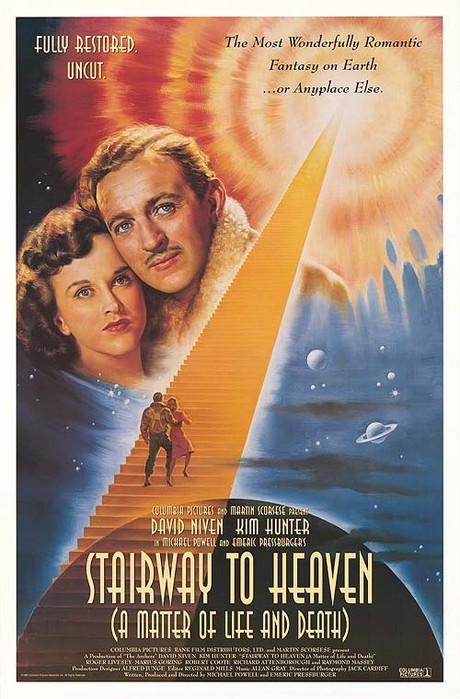
Sir Richard Attenborough once again bridges us to our next feature… It’s kinda funny, in a way, watching his hair regrow as we spin the dial back a decade with each movie. He had a crazy-awesome combover going on in THE FLIGHT OF THE PHOENIX, was starting to thin a bit in THE SHIP THAT DIED OF SHAME and now in A MATTER OF LIFE AND DEATH (aka STAIRWAY TO HEAVEN) we see him with a full, thick head of hair.
Well, we see it for a few moments anyway. He doesn’t have much of a part in the movie. Credited only as “An English Pilot” and only given one or two lines he is more of a bit player this time out.
No, this movie, written, produced and directed by the acclaimed filmmaking duo of Michael Powell and Emerich Pressburger, is all about David Niven and is much more rooted in the fantastic than I assumed.
Part of the reason I love doing A Movie A Day is that I find my preconceived notions of certain movies constantly shattered. Having seen Powell & Pressburger’s THE RED SHOES and looked the title and picture associated with this film (that of David Niven in a Lancaster cockpit) I thought I understood what I was in for… some kind of extremely well executed war drama…
I couldn’t have been more wrong (except for the “well executed” part, of course). Yes, it’s a romance tale, but it’s essentially a better version of DEFENDING YOUR LIFE (and don’t get me wrong, I have a huge soft spot for that movie).
When we first meet Peter Carter (Niven) he’s alone in a Lancaster shot to hell. The plane is on autopilot and he’s sitting in the carriage with only the dead body of his good friend Bob (Robert Coote) to keep him company. Half of Niven’s face is covered in blood and he’s responding to a call from an American operator.
David Niven is David Niven. Even with the wind blowing through the breached hull of the plane and fire surrounding him he’s calm and collected, reserved to his fate. So when he conversationally talks up this radio operator, June (Kim Hunter), she is pulled right in by his charm and the tragedy of his circumstances.
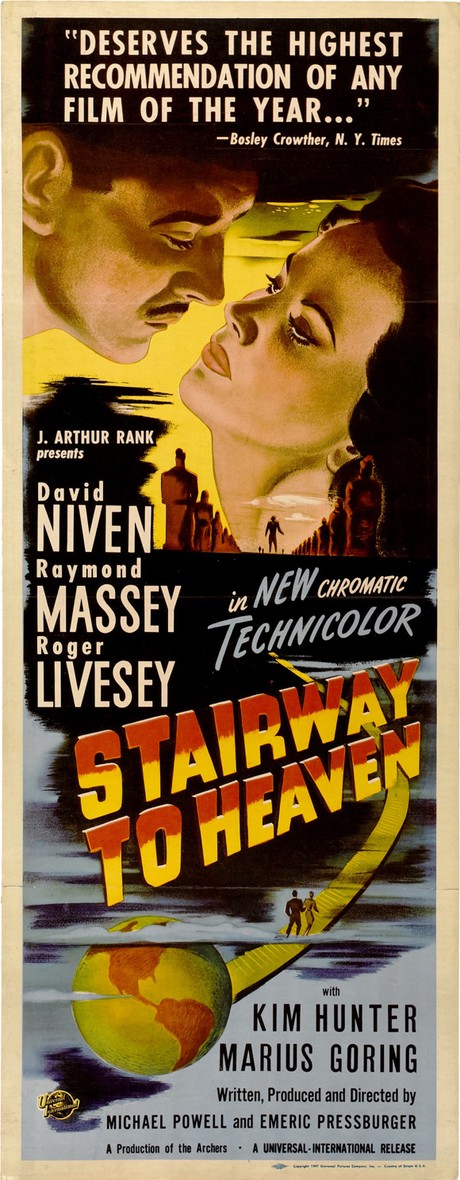
He has no parachute and plans to jump as soon as he gets off the radio with her… better than burning in the crash, he rationalizes. Hunter is strangely affected by this and weeps when he signs off. True to his word, the dude jumps out.
The rest of the movie can be perceived in two different ways. The way I think Powell and Pressburger intended was that Niven survives the jump and washes ashore with some serious damage to his head. The other interpretation is that Niven was meant to die. We see heaven and his good buddy Bob waiting for him. Due to the fog there was a mistake in collecting Niven’s soul and this error gives him another chance at life.
Now, this could be seen as Niven’s mind coping with the damage done to his head and from what I gather that’s the intention of the filmmakers, but you can also watch the movie and see the heaven stuff as being genuinely real.
Niven washes ashore and awakens convinced he’s passed on (and why not? He comes across a naked boy playing a flute… that doesn’t happen everyday. Why that’d represent heaven I’m not too sure…), but quickly realizes he hasn’t when he stumbles across June herself.
They instantly fall in love, having bonded over the radio already and that’s the one thing Niven has to hold on to as the battle for his soul begins.
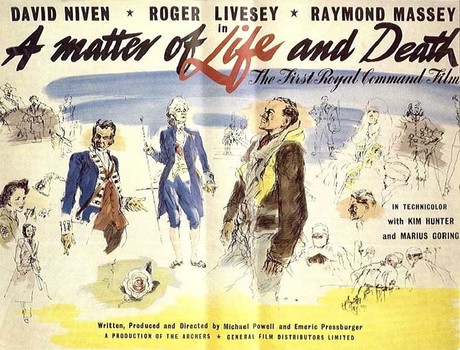
A heavenly messenger appears to Niven in the form of Marius Goring’s Conductor 71 alerting him to the oversight and requesting Niven give up his life and follow him into heaven. Conductor 71 is a Frenchman who died during the revolution (he has a scarf keeping his neck connected to his guillotined head) and was the one who made the error in collecting Niven’s soul.
Niven appeals, saying that in the time between when he was supposed to have died and the collection of his soul he has fallen in love and it wouldn’t be fair to the woman who has fallen in love with him. Why should she and he be punished for heaven’s mistake?
So for the first time in a thousand years a trial is set to determine if Niven deserves a new lease on life or if he has to forgo this new love and strap on a pair of wings.
In the real world a doctor friend of June’s, played by Roger Livesey, takes an interest in Niven’s medical condition and determines that these hallucinations of his are symptomatic of a real trauma to his head. Real or not, this trial, he deduces, will determine if Niven lives or dies. If he loses this trial, he will give up the fight, but if he wins he might survive the crucial operation that coincides with the heavenly trial.
Jack Cardiff’s beautiful Technicolor photography is on full display here and in an unusual twist Powell and Pressburger decide to photograph all the heaven stuff in traditional black and white, leaving all the earthbound material done in gorgeous Technicolor.
You’d imagine they’d do it the opposite way, but it really works for this particular story. Conductor 71 even comments on it, saying heaven could use more Technicolor, a sly and awesome nod to one of the best innovations in cinema history.
The trial itself is fantastic and perfectly executed. The prosecutor is an American revolutionary (played by Raymond Massey) who was killed by a British bullet in 1775 and despises Niven for being British and hates him even more for stealing the heart of a good Boston-born American girl. The defense… well, you have to see it. I can’t spoil that part, but the defense is solid and the way Powell & Pressburger film all the heaven stuff is gorgeous and surreal; the matte painting work really shining in all its epic art deco glory.
Final Thoughts: This Powell & Pressburger film is overlooked and that’s a damn shame. Having seen a good sampling of their work I have to say that this if my favorite piece of theirs. It might not have the emotional punch that THE RED SHOES has, but it moves and is just so damn entertaining. David Niven is in top form and Kim Hunter is very believable as his vulnerable love interest. And the heaven stuff is just so beautifully imagined and far from the typical sitting-in-clouds or Garden of Eden type scenery that it really did wow me. So far this film is the highlight of this new AMAD run and it’ll take some amazing filmmaking to supplant this film on my favorites list.
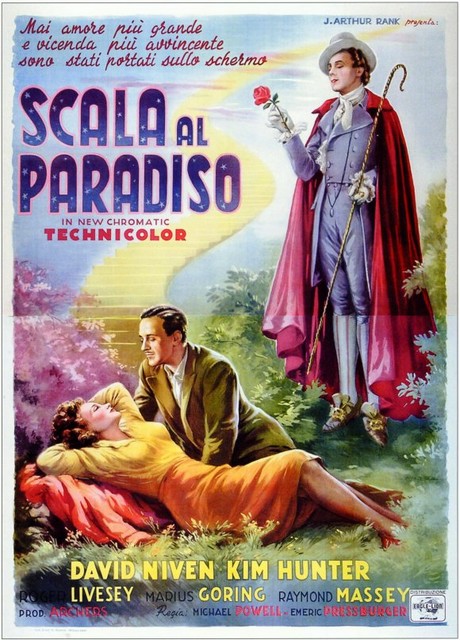
Upcoming A Movie A Day Titles:
BLACK NARCISSUS (1947)

AGE OF CONSENT (1969)

BIGGER THAN LIFE (1956)

CHARADE (1963)
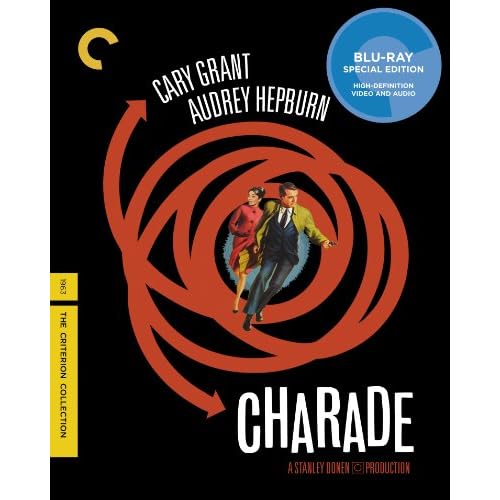
HOPSCOTCH (1980)

Tomorrow we follow Powell & Pressburger to their famous Technicolor achievement about nuns in the Himalayas: Black Narcissus! In Hi-Def, no less!
-Eric Vespe
”Quint”
quint@aintitcool.com
Follow Me On Twitter

Previous A Movie A Day (2013) Titles:
